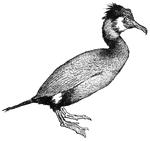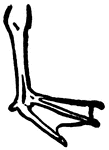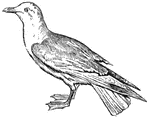Clipart tagged: ‘webbed feet’

Great Northern Diver
The Great Northern Diver, Colymbus glacialis, "...is black above, with belts of white spots making a…
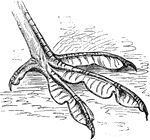
Coot Foot
"Fig. 53 shows the lobate foot of a coot. In the lobate foot, a paddle results not from connecting webs,…
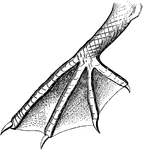
Pelican Foot
"Fig. 52 shows the totipalmate foot of a pelican. The totipalmate is a special case of palmation, in…

Phalarope Foot
"Fig. 53 bis - shows the lobate foot of a phalarope. In the lobate foot, a paddle results not from connecting…

Grebe
Diving birds, such as the grebe, have webbed (or lobed) feet and are expert in swimming and diving.
The Foot of a Prairie Hen
"Cupidonia. Tarsi scant-feathered to the toes in front and on sides, bare on a strip behind; toes extensively…

Loon
The loon is a diving bird. Its peculiar cry, sometimes resembling a hysterical laugh, has given rise…

Petrel
Petrels resemble gulls, except in having the nostrils open as two parallel tubes on the top of the beak.
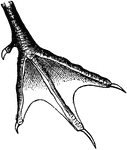
Incised Webbed Foot of a Tern
"...one or both webs may be so deeply incised, that is, cut away, that the palmation is practically…
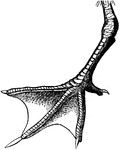
Webbed Foot of a Tern
"In the palmate or ordinary webbed foot, all the front toes are united by ample webs." Elliot Coues,…
